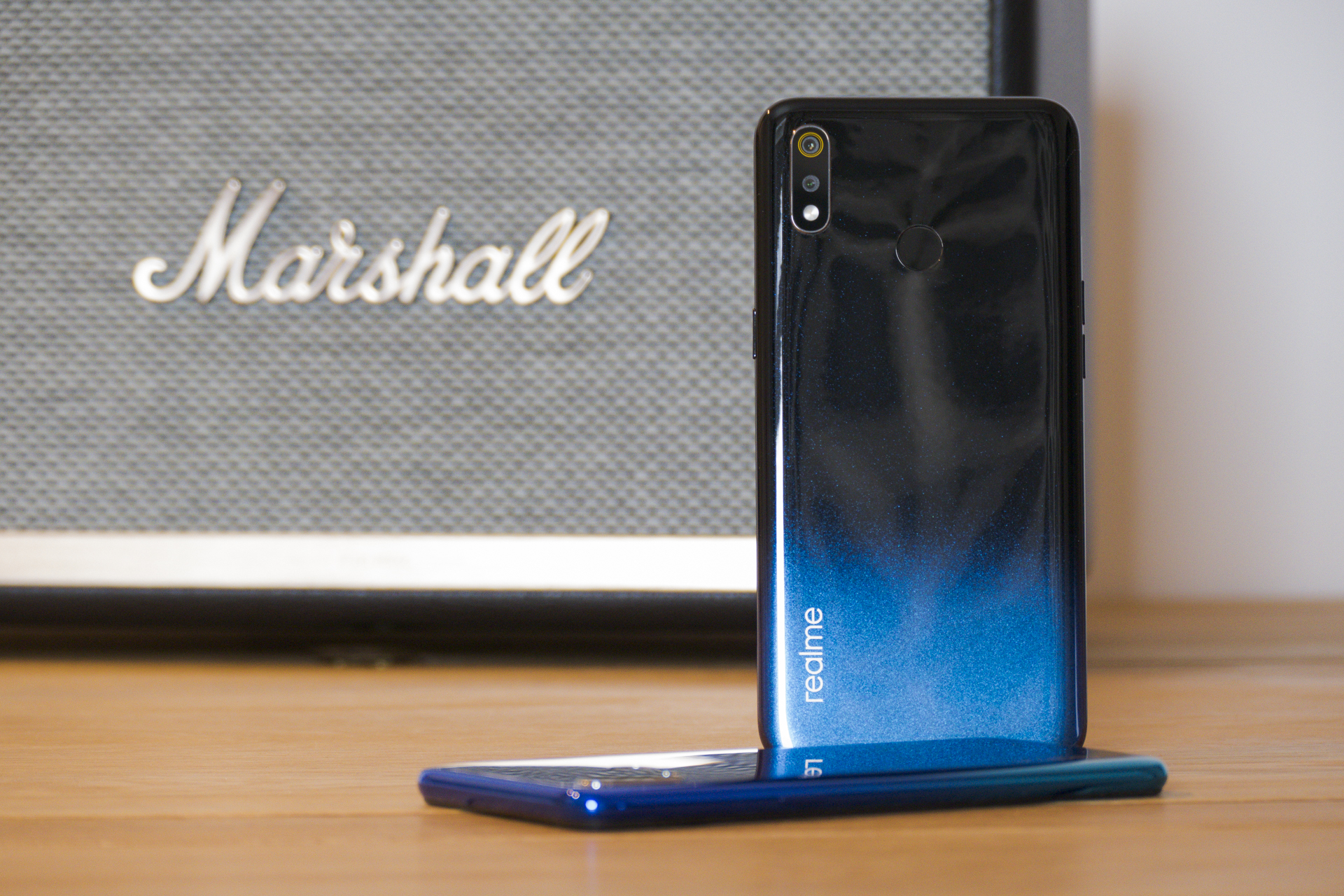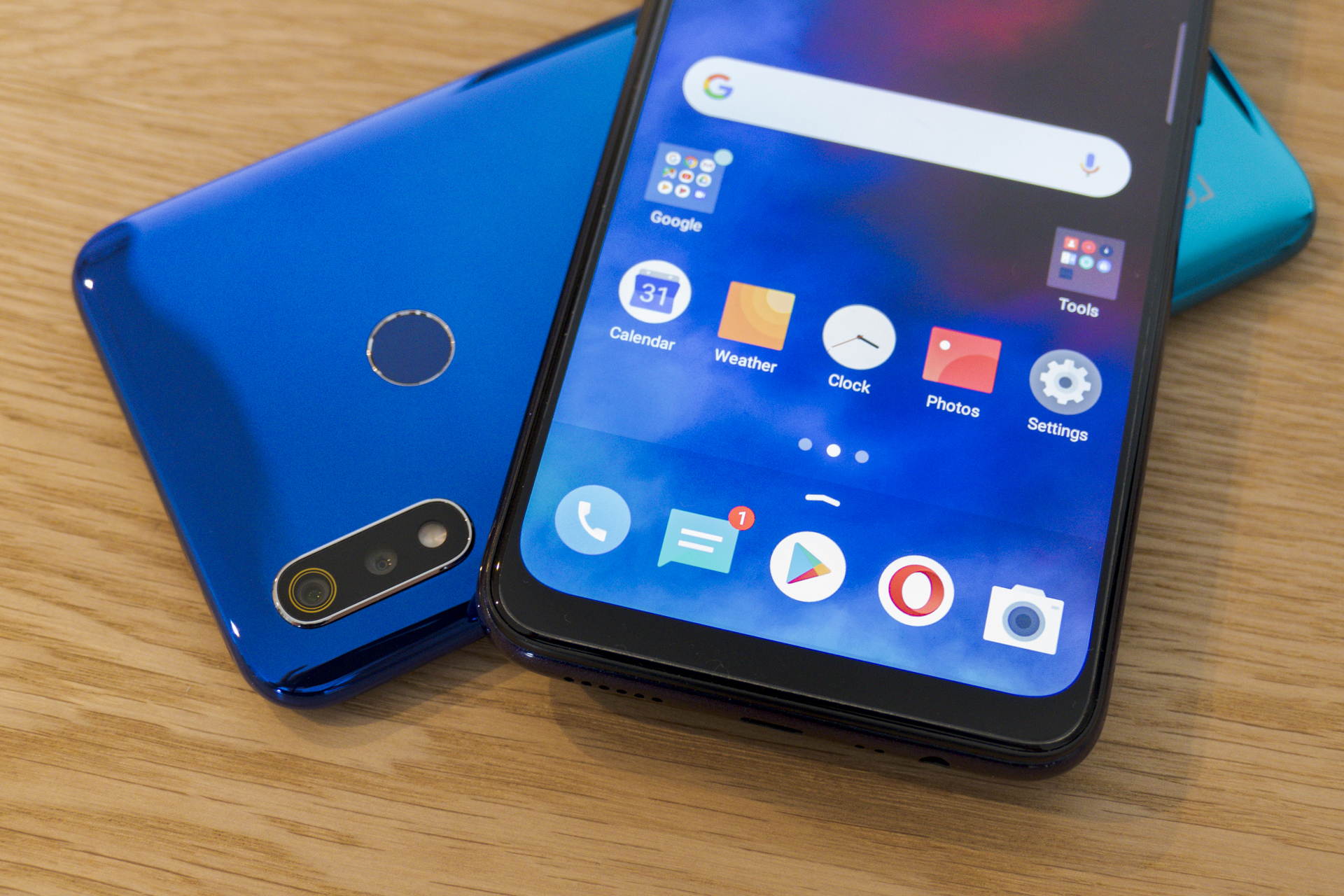Our expectations continue to be raised when it comes to smartphones that cost $1,000 or more, but can the same be said for phones that cost a lot less? Realme is a very new brand, which at the moment targets emerging markets where demands are high, but budgets are usually relatively low. It needs to make a phone that attracts people, has good features, capable performance, and a sensible price. That’s a tall order.
The Realme 3 costs less than $150, a price that once would have ensured nothing but mediocrity. Seeing as mediocrity is simply not acceptable today no matter how much you pay, what’s the Realme 3 like? Ready for a surprise? It’s not just good — it’s great in a lot of ways.
Design and specification
Realme is part of the BBK Electronics empire and operates as a separate company, just like OnePlus. The family ties are strong in the design. The screen has a teardrop notch, neatly rounded sides for superb comfort, and a flashy design on the back. At 8.3mm the Realme 3 is quite thick, but due to the trick of adding a lip between the body and the screen, the visual and ergonomic downsides of the size are reduced.
- 1. The Realme 3
The rear panel is made of plastic and comes in a choice of gradient-style finishes. The brighter of the two seen here is really eye-catching, but the subtler version catches the light in an attractive way. From a distance, the Realme 3 looks like a device that costs a lot more, due to the modern design and great-looking colors. There’s a fingerprint sensor on the back, and a dual-lens camera too. The selfie camera adds face recognition.
Get up close to the Realme 3 and there are some giveaways regarding its price. It charges with a Micro USB cable, the buttons have a tiny bit more movement than I’d prefer, and their motion doesn’t have much finesse to it. The 6.2-inch LCD screen gets very smudgy and has a pronounced chin, but the rest of the bezels aren’t gigantic.
The Realme 3 not only has a capable camera, but also a few great features that encourage you to get out and shoot photos.
The screen itself is pleasant to look at, easy on the eyes, and bright enough for an overcast English day. However, the low 1520 x 720-pixel resolution lets it down, and viewing photos and video isn’t very impressive, although the color balance is great. Face unlock using the 13-megapixel selfie camera is fast and reliable, as is the fingerprint sensor on the back.
The Realme 3 has a MediaTek P70 processor, 4GB of RAM, and 64GB storage space, plus a large 4230mAh battery provides decent standby times. For between $130 and $150, the Realme 3 impresses a lot at this stage. Let’s take a look at a far harder feature to crack at this low price: The camera.
Camera
At this price, the camera should be terrible, shouldn’t it? But it’s not. The Realme 3 not only has a capable camera, but also a few great features that encourage you to get out and shoot photos, something we really applaud and don’t always see even on much more expensive phones. Part of this appeal comes from the Realme 3’s MediaTek Helio P70 processor, which has artificial intelligence features inside for scene recognition, and enough power to drive a new feature called Chroma Boost, and a Nightscape mode too.

The dual-lens setup has a basic 13-megapixel main lens and a secondary 2-megapixel lens, but with an f/1,8 aperture. It takes portrait photos, has a pro manual mode, a panorama mode, an A.I.-driven scene recognition mode, and an extensive beauty mode. The shots it takes are way better than expected. It coped with overcast weather and low sun, still managing to bring out colors and detail in spots other cameras would struggle with, plus the processing time is fast. Yes, some images do benefit from some editing if you want to wow when sharing them, but it’s not an essential.
- 1. Standard Photo mode on the Realme 3
- 2. Chroma Boost mode on the Realme 3
Instead of editing to add pop and presence, you can use Realme’s Chroma Boost mode. Activated on demand in the camera app, it enhances the colors and contrast, and brings out more detail on the shaded areas of a photo. It’s very effective, and while there will be some photos that aren’t improved — a photo we took of daffodils made them look radioactive, for example — many scenes can look stunning if you choose wisely. Yes, I said stunning photos came from a sub-$150 smartphone.
The Nightscape mode is found under a menu in the camera app. Like the Chroma Boost mode, there is a short processing time after pressing the shutter button when the image is captured. The pictures it takes are not subtle, or in all honesty, particularly good photos — noise and blur are commonplace — but it’s impossible to deny how much more you can see compared to a non-Nightscape mode shot. It can’t match the Pixel 3, or the Huawei Mate 20 Pro, but it’s not supposed to. Used sensibly, it will likely take decent low-light photos.
- 1. Standard Photo Mode on the Realme 3
- 2. Nightscape mode on the Realme 3
The fact the Realme 3 has Nightscape mode and the Chroma Boost mode at all is astounding at this price, and it’s perhaps even more impressive that the photos it takes aren’t ones we’d immediately dismiss as awful.
Performance and software
The MediaTek P70 is quite new, and isn’t found in many devices, but phones like the Realme 3 — low cost, high performance, strong feature sets — are its natural home. It’s an octa-core processor with a clock speed of up to 2.1GHz, and it keeps the Realme 3 feeling snappy and capable. Although it does take a while to start up, it’s fast enough for most activities. Gaming performance is good too. I played Reckless Racing 3 and Riptide GP: Renegade without any issue or stuttering, or noticeably low framerates.
Realme hasn’t made its own software interface yet, and uses Oppo’s Color OS over the top of Android 9.0 Pie. ColorOS has never been our favorite, but things are slightly better with version 6 installed on the Realme 3. The app drawer, icon layout, and overall design are closer to Android we see on a Pixel. Notifications still need work, as they aren’t very interactive in the notification shade, but a tap does open the relevant app.

Quick actions are available when you long press an app icon, Google Assistant is available with a long press of the home button or a dedicated key in the notification shade, and there is a Color OS smart assistant to the left of the home screen. This shows your calendar, frequent contacts, and apps, plus a step counter. Finally, there are several gesture-control systems, all based in swipes from the bottom of the screen. These are faster than we’ve experienced on older versions of Color OS, and became our preferred method of interaction.
Initial fears the software would be a massive disappointment were unfounded, although it’s still not ideal. It can be slow, it didn’t like using Android Transfer software on my MacBook without delving into the developer options, and there are plenty of preinstalled apps too.
Conclusion
It’s very hard to argue against the Realme 3. The price is competitive, it looks great, and the features are tempting. Realme is a new company — directly competing with Xiaomi’s Redmi brand — and it has matured considerably since we tried the Realme 1, which wasn’t a phone to recommend. That’s not the case with the Realme 3, which is definitely worthy of your attention. Currently, it’s available in India only.
What does this mean for our original focus, to see if our expectations should shift for what makes a cheap phone today? There are certainly aspects of the Realme 3 that are cheap and cheerful, but not as many as you’d expect, while the things that matter — performance and camera — are stronger and more usable than our preconceived ideas about low-cost smartphones.
In the same way as expensive smartphones, reasonably priced smartphones are also becoming more complex and technically impressive. More than ever before, you’re getting more for your money whatever type of smartphone you buy, and the Realme 3 proves low cost doesn’t have to mean low quality anymore.


























